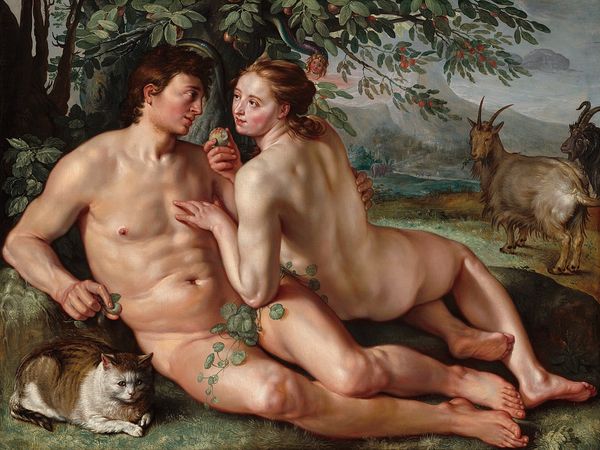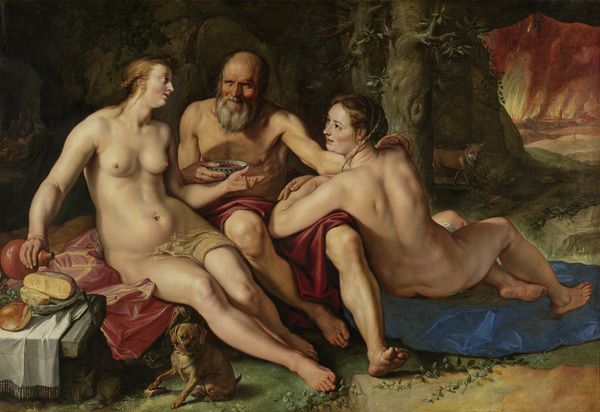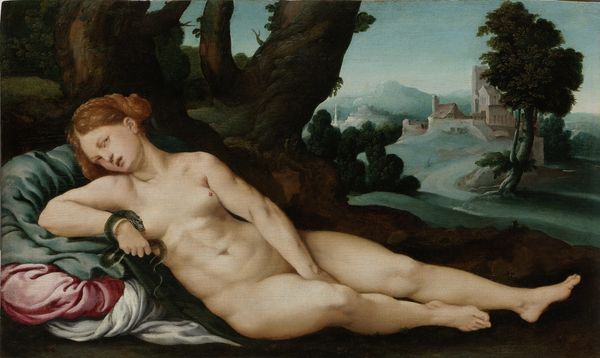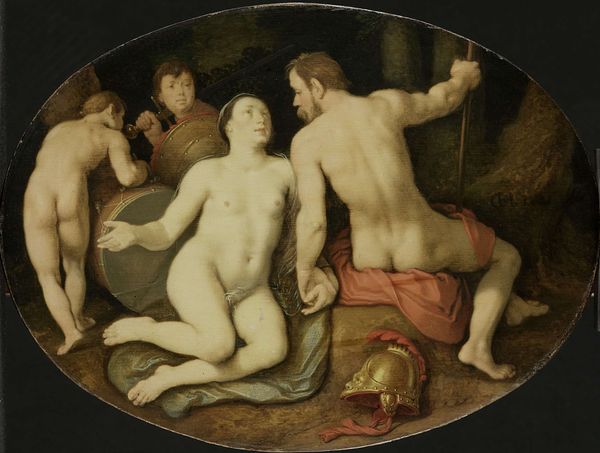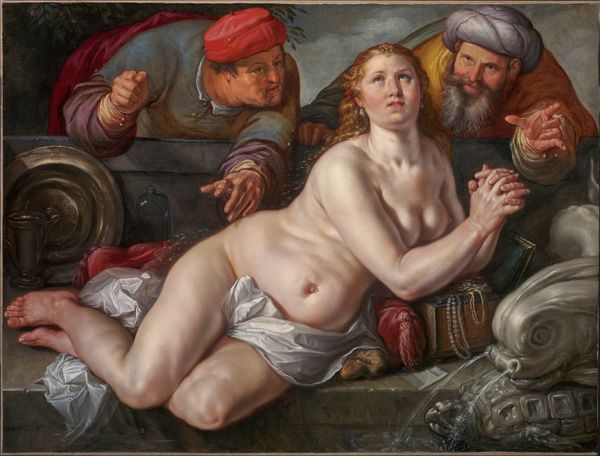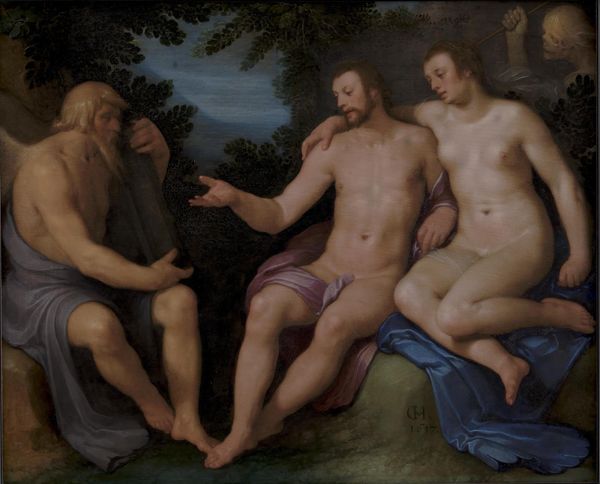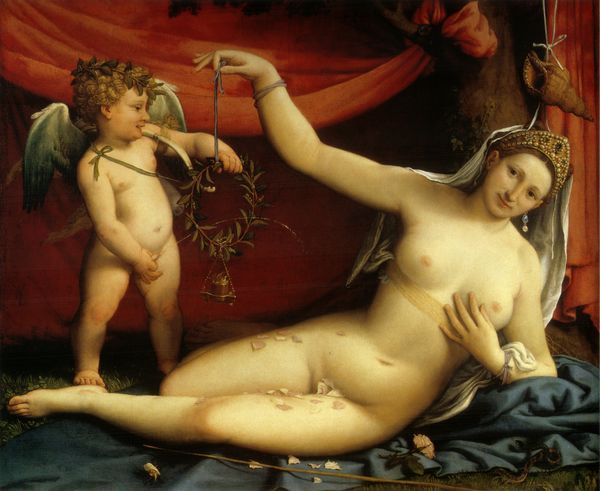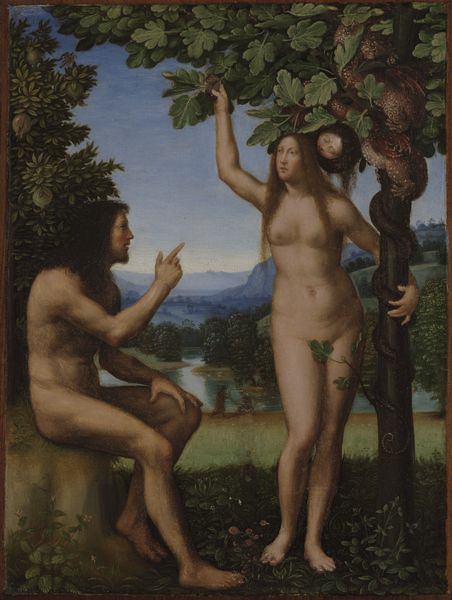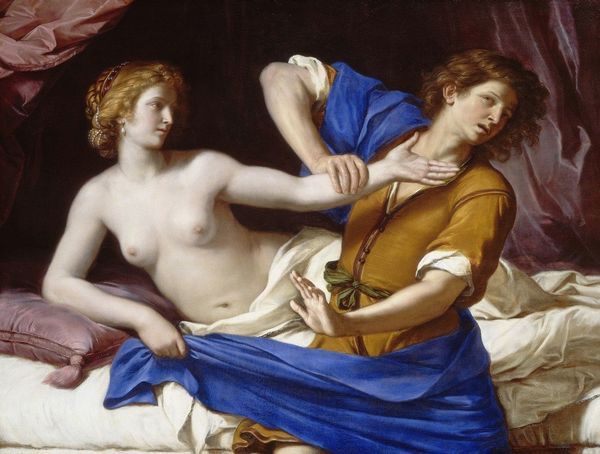
painting, oil-paint
#
portrait
#
allegory
#
painting
#
oil-paint
#
mannerism
#
history-painting
#
nude
Dimensions: height 90 cm, width 149.5 cm
Copyright: Rijks Museum: Open Domain
Curator: Hendrick Goltzius gives us “Vertumnus and Pomona,” painted around 1613. You’ll find it hanging in the Rijksmuseum. What are your immediate impressions? Editor: Oh, the lighting is extraordinary. It almost feels theatrical, doesn't it? This dramatic contrast highlights the figures... it's like they're caught in a spotlight on a stage. Curator: Indeed. Observe how Goltzius masterfully manipulates light and shadow. The sharp contrasts lend the painting a dynamism that aligns with Mannerist principles, while underscoring a tension between youth and age, beauty and experience. Editor: The positioning of the figures is so interesting. The elderly woman almost seems to be guarding or presenting the reclining nude figure. I keep trying to guess the relationship—the body language speaks of intimacy, but I feel like there's deception somewhere too. Is that the "allegory" at play? Curator: Precisely. This portrays the Roman tale of Vertumnus, god of seasons and gardens, seducing the nymph Pomona through disguise. The figure is Vertumnus, embodying his transformation into an old woman. We are witnessing artifice and unveiling. Editor: It's brilliant, isn't it? I think there is a quiet but firm, empowered gaze. Pomona is so vulnerable physically but she seems totally knowing, entirely undisturbed by Vertumnus’ gaze. I also keep being drawn to the sensuality and color play between her radiant skin and the fabrics beneath her. Curator: The tactile quality certainly stands out, showcasing Goltzius' skill with oil-paint. Note the exquisite textures – the delicate skin tones, the soft drapery, juxtaposed with the wizened, lined features of Vertumnus. These contribute to the visual richness of the narrative. Editor: And what an unsettling narrative it is! A god having to disguise himself in order to gain someone's trust or affection? Speaks volumes, doesn't it, about the dynamics of power and persuasion then, but sadly, even now. Curator: It offers a lens into understanding the nuances of Mannerist art – its love for artifice, allegory and complex narratives that tease the viewer with layered meanings and moral questions. Editor: Seeing it this way definitely adds another layer. Now I see it as not just a visual delight, but as a complex commentary on desire, power, and the ever-changing seasons of our lives. It's haunting and magnetic, isn't it? Curator: Haunting, yes, because it echoes with the resonance of human desires and intentions across time.
Comments
No comments
Be the first to comment and join the conversation on the ultimate creative platform.
